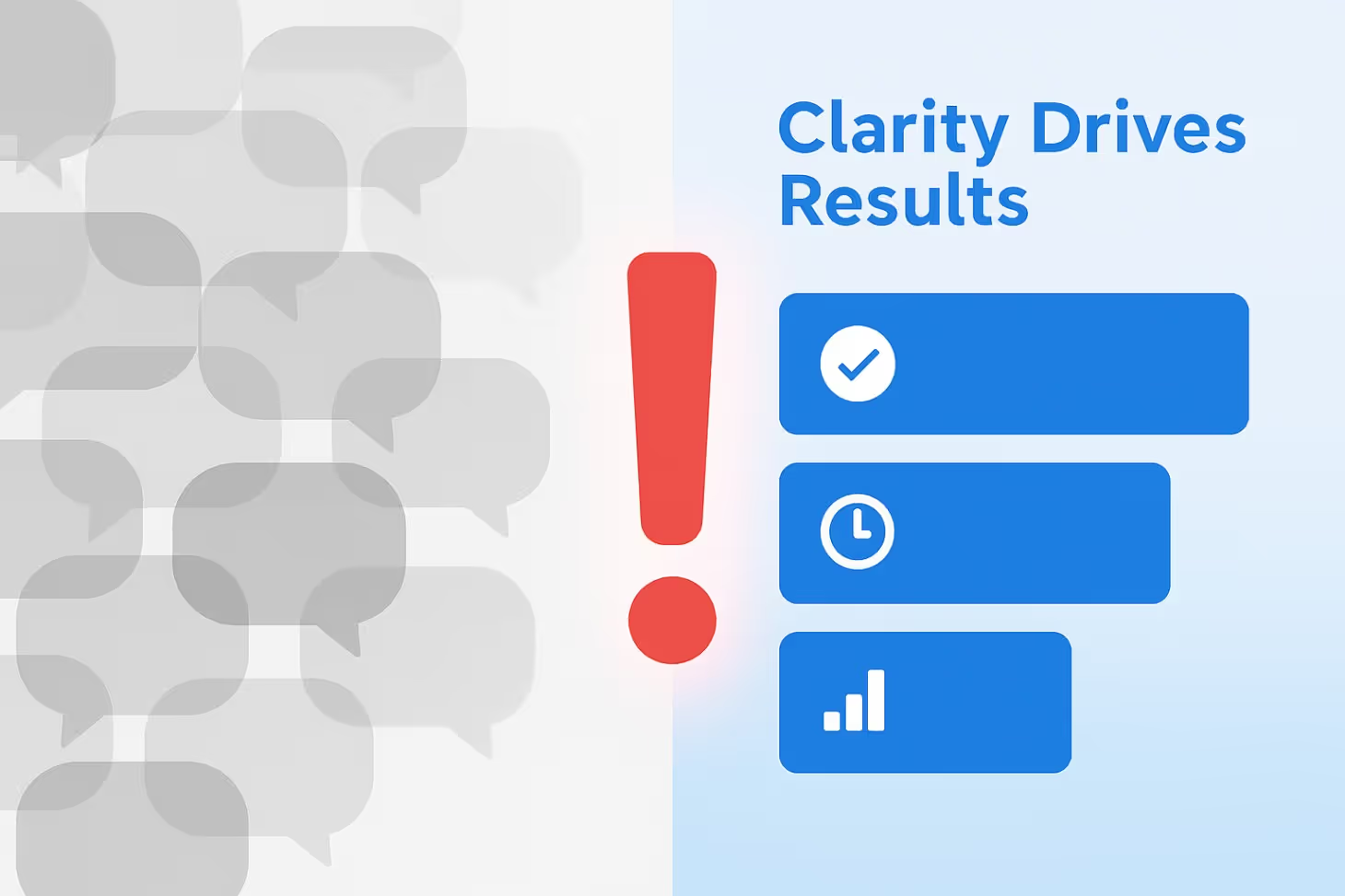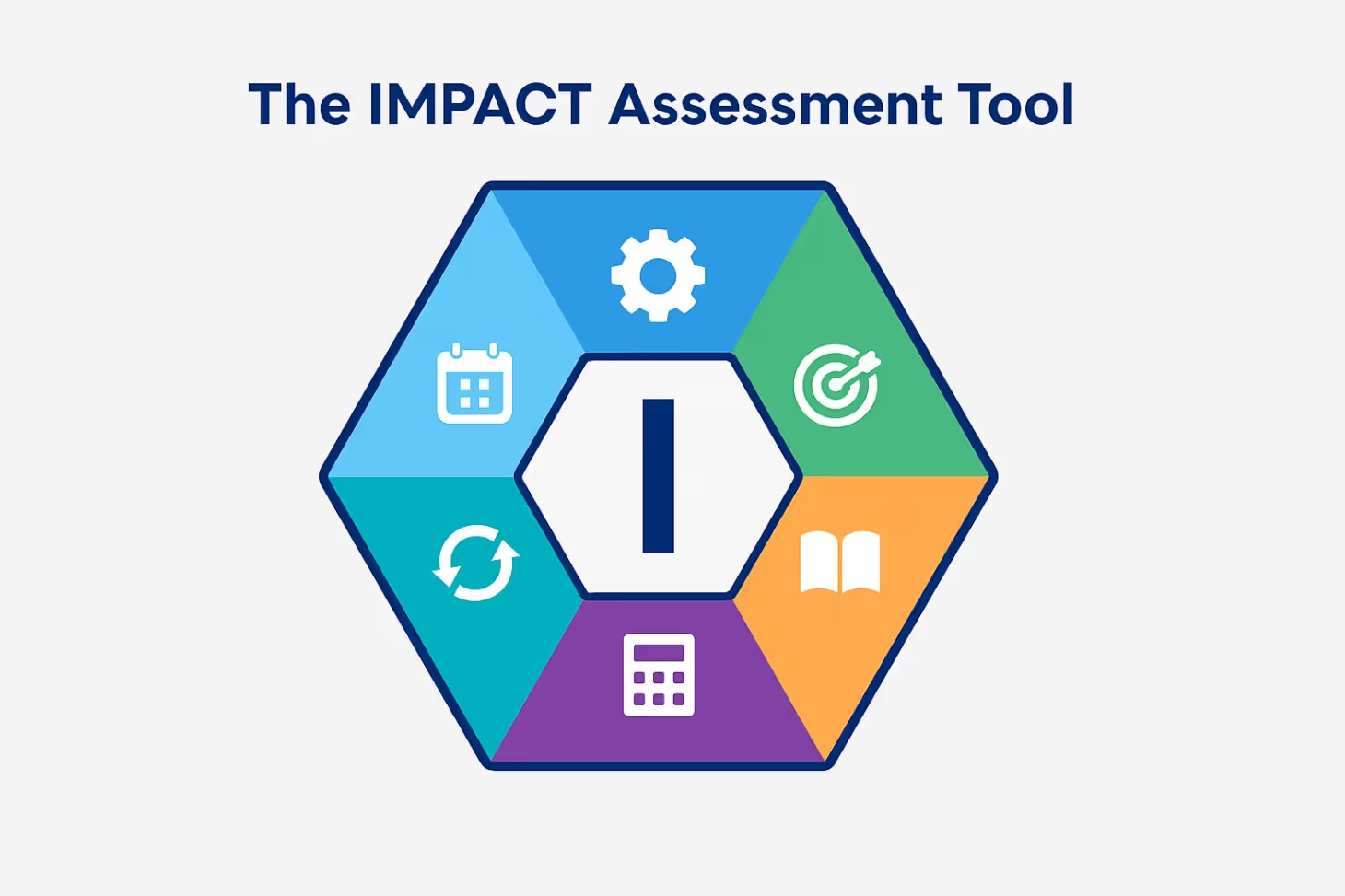Digital transformation has completely changed the way companies do business. These days, nine out of ten leading firms are putting money into artificial intelligence, and more than a third of all businesses are already using AI in their operations. But even with so many companies embracing these technologies, technical teams and business leaders still often end up talking past each other. When teams talk past each other, it’s not just frustrating and it is expensive. In fact, workplace miscommunication racks up an estimated $1.2 trillion in losses for US businesses every year.
Understanding how to bridge this communication divide isn't just about clarity. It is also about enabling faster decision-making, securing investment approvals, and ensuring that transformative technologies actually transform your business. These days, with knowledge workers devoting nearly nine out of every ten hours to communicating across a jumble of channels, being able to turn complicated technical talk into plain business language isn’t just helpful. It gives you a real edge over the competition.

Why Clear Technical Communication Is More Crucial Than Ever
There has never been a more critical moment for clear, effective technical communication. Some eye-opening trends have come to light lately, which makes this need more urgent than ever:
- People are drowning in a sea of nonstop messages and meetings. With 78% of professionals reporting increased communication frequency and 73% using more communication channels than ever before, the challenge is not just volume, it is also quality. When communication breaks down, so does business performance. Just ask the around 28% of employees who say poor communication is the main reason they miss deadlines.
- The divide between what tech teams know and what the rest of the business understands keeps growing. As machine learning, cloud computing, and automation become more advanced, the distance between what tech teams grasp and what business leaders actually need to understand continues to widen. The price of this disconnect really hits home when you consider that about one in six businesses has trouble ensuring their employees are properly trained on technology services.
- Leaders need stronger, more straightforward reasons to make investment decisions. These days, it is not enough for business leaders to know what a technology does. They need to see exactly how a particular investment will pay off. Demand for technical writing and clear communication is on the rise, with growth projected at 10–11% through 2026. This is a clear sign that businesses are craving more clarity when it comes to making technical decisions.
Looking to make your tech message resonate with business leaders?
If you're ready to simplify complex ideas and turn technical innovation into compelling, business-focused stories, VideoPulse can help. We create tailored video content that bridges the communication gap—so your stakeholders not only understand, but act.
What Happens When Technical Communication Breaks Down
Before we dive into possible fixes, it is important to get clear on what is really at stake. When organizations stumble over explaining technical ideas clearly, the fallout shows up in some very real and often costly ways:
- Stakeholders misunderstand project needs or technical limitations. It is no surprise that things get delayed or go over budget. Nearly half of on-site employees say they have lost trust in their leaders because of poor communication. This kind of breakdown takes a real toll on team morale and can derail projects.
- Great ideas get lost in translation. If the message is not clear, game-changing technologies can easily be overlooked or end up missing out on the resources they need.
- Leaders miss critical risks. When technical risks are not put into plain business language, leaders are left in the dark. They cannot spot trouble ahead or weigh risks and rewards before making a call.

A Practical Approach: Breaking Down Technical Jargon with the BRIDGE Method
The most effective approach to simplifying technical concepts follows a structured framework I call BRIDGE — an acronym that guides communicators through six essential steps:
- Business Impact First
Start by spelling out exactly how the technical solution benefits the business. Instead of saying, “Our new API architecture uses microservices,” try “This upgrade will cut customer wait times by 40% and save us $200,000 a year in server costs.” - Relatable Analogies
Use comparisons everyone understands. Analogies play to the "fast thinking" mode of System 1 decision-making, helping audiences understand concepts without working too hard. For example, compare blockchain to a giant bank vault filled with glass-fronted safe deposit boxes, everyone can see what is inside each box, but only the person with the right key can open it. - Interactive Visuals
Go beyond static slides and bring your ideas to life. Visuals help turn abstract concepts into something tangible, especially when they are interactive. - Data-Driven Evidence
Business leaders want measurable results. Always convert technical benefits into outcomes they care about. - Graduated Complexity
Start with high-level ideas and build toward more technical detail. This allows people to enter the conversation at their comfort level. - Engagement Checkpoints
Pause regularly for questions and clarification, ensuring everyone is aligned before you move on to more complex material.

A Second Approach: The IMPACT Assessment Tool
Use the IMPACT framework to structure your message when communicating about technology investments or new solutions:
- Implementation Feasibility: Clearly explain what it takes to get started—timelines, resources, and potential hurdles.
- Measurable Outcomes: Highlight the business benefits using metrics that matter.
- Precedent and Proof: Bring in real examples from similar businesses that have succeeded with this approach.
- Adaptability Factors: Show how the solution evolves as the business changes.
- Cost-Benefit Analysis: Give a full financial picture, covering both costs and expected returns.
- Timeline and Milestones: Break the rollout into clear, trackable phases.
Common Pitfalls and How to Avoid Them
- Information Overload:
Avoid overloading your audience. Business stakeholders do not need to know everything—just enough to make informed decisions. - Acronym Abuse:
Define acronyms clearly and only use them when absolutely necessary. - PowerPoint as Speaker Notes:
Slides should enhance understanding—not act as a script. - Failure to Connect to Business Outcomes:
Tie every technical detail back to business impact. - One-Size-Fits-All Approach:
Tailor your message to each audience and adjust your level of detail accordingly.
Visual Communication Strategies That Work
- Process Flow Diagrams: Use simple visuals to explain how things work.
- Before-and-After Comparisons: Show clear improvements using side-by-side visuals.
- Interactive Dashboards: Let stakeholders explore data in real time.
- Infographic Summaries: Use tools like Canva to create visually digestible summaries.
- Real-Time Demonstrations: Show how tools work live, not just in slides.
Book a consultation to see how we can bring your communication to life—and your ideas to market faster.
How One Nonprofit Saved 35% Through Smarter Cloud Communication
Consider how one nonprofit cooperative, working with SoftwareOne, successfully navigated a complex cloud migration project by focusing on business impact over tech jargon.
The original challenge? Their IT team was buried under legacy infrastructure and rising operational costs. They needed to modernize—but their leadership team was hesitant, unsure how cloud migration would actually pay off.
The breakthrough came when SoftwareOne helped them shift the conversation. Instead of leading with technical terms like “lift-and-shift migration,” they reframed the initiative around concrete business value:
“Migrating to AWS will reduce IT infrastructure costs by 35%, improve overall agility, and free up time for innovation.”
This approach aligned perfectly with the BRIDGE communication framework:
- Business Impact First: The 35% cost reduction became the lead message.
- Relatable Analogies: The shift was compared to moving from managing your own utilities to joining a reliable, cost-efficient grid.
- Interactive Visuals: The team used side-by-side projections showing cost savings over five years and resource reallocation benefits.
- Data-Driven Evidence: Real metrics and outcomes were tracked post-migration to show ROI.
- Graduated Complexity: The executive summary focused on financial outcomes, with technical details layered in appendices.
- Engagement Checkpoints: Stakeholders were given opportunities to ask questions and explore scenarios using interactive dashboards.
The result? Faster decision-making, full leadership buy-in, and additional budget approved for future innovation initiatives.
Figuring Out If Your Communication Is Actually Paying Off
Track these signs to measure success:
- Decision Speed: Are decisions getting made faster?
- Project Approval Rates: Are more technical proposals getting approved?
- Stakeholder Engagement: Are people showing up, asking questions, and following up?
- Implementation Success: Did the project deliver what was promised?
- Post-Implementation Satisfaction: Do stakeholders feel it met their expectations?
How to Create Decision-Making Tools People Can Actually Use
- Decision Trees: Let users explore different outcomes.
- Cost Calculators: Help users plug in numbers and see returns.
- Risk Assessment Matrices: Make risk evaluation simple.
- ROI Simulators: Show how changes affect returns in real time.
Common Questions People Ask
Q: What if I cannot explain a technical detail clearly on the spot?
A: Say, “Great question—let me check with the engineering team and get back to you with a detailed answer that connects it to business outcomes.”
Q:What if someone asks for more technical depth than I think is necessary?
A: Provide the detail, but always circle back to business relevance.
Q: How do I test if my message is clear before I share it with leadership?
A: Try it on non-technical coworkers. If they understand and can summarize the business value, you're on track.
Q: How should I respond to pushback on new tech?
A: Address concerns with proof. Use analogies, real examples, and emphasize how risks will be managed.
How to Put Better Technical Communication Into Action
Weeks 1 and 2: Assess and Prepare
- Review current technical presentations.
- Survey stakeholders on their preferences.
- Build a library of analogies and explanations.
Weeks 3 and 4: Apply the BRIDGE Method
- Revamp one major presentation using the framework.
- Add interactive visuals and clear business impacts.
Weeks 5 and 6: Test and Refine
- Present to non-technical colleagues.
- Gather feedback and adjust.
- Build reusable templates.
Ongoing: Measure and Improve
- Track approval timelines and decision speeds.
- Monitor stakeholder engagement.
- Keep refining what works.
Expert Take: Why Layering Information Gradually Really Works
The most overlooked part of technical communication is progressive disclosure—gradually layering information. Present executive summaries for fast decisions, appendices for deep dives, and interactive tools for exploration. This supports different learning styles while ensuring everyone gets what they need to contribute meaningfully.
Start transforming your technical communication today. Whether you need buy-in for a critical initiative or want to explain complex systems to your board, VideoPulse helps you create powerful, accessible video content that makes technical ideas click for business leaders.

